
The Ethernet Alliance and Optical Networking Forum featured interoperability demonstrations at data rates up to 800 Gbps.
San Francisco — With so many companies and products comprising the optical networking ecosystem, interoperability is paramount. All those semiconductors, optical modules, switches, routers, servers, test equipment, and the software that makes them function must first provide their compliance to standards and then prove themselves in real-world situations. That’s where industry organizations Ethernet Alliance and Optical Internetworking Forum come in.
Each year at OFC, members of these two organizations come together to construct networks that show the latest developments in optical networks. For 2025, the deployment of 800G (800 Gb/sec) optical connections is well underway. Indeed, 1.6T (Tb/sec) products — optical modules — were all over the exhibit hall although not yet in deployment and not demonstrated by these two organizations. We should see that at OFC 2026 in Los Angeles.
Ethernet Alliance
In the video, I spoke with Ethernet Alliance Events & Conferences Committee Chair David Rodgers of EXFO, who explained some of the testing that Ethernet Alliance performs. “It spans the globe of testing,” said Rodgers “from simple bit-error rate testing up to high-value protocol testing.”
Rodgers also explained the reason for testing of several data rates. Storage systems don’t need the highest possible data rates, though data centers do. Figure 1 shows the Ethernet Alliance system demonstration.
Optical Internetworking Forum
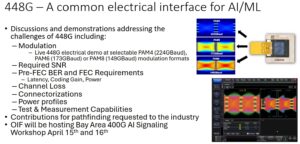
Figure 2. Because data rates are never fast enough, the OIF is looking into the design and test challenges of 448 Gb/sec (448G) electrical interfaces for optical modules. Image: OIF.
While Ethernet standards come from IEEE, OIF develops standards for communications interfaces for the electrical and optical domains. featured several interoperability demos at speeds ranging from 100G to 800G. OIF focuses on interoperability of electrical-to-optical interfaces. Currently, OIF has documents covering 112 Gb/sec and 224 Gb/sec. Next comes 448 Gb/sec interfaces. Indeed, OIF will host its 448Gbps Signaling for AI Workshop on April 15 & 16, 2025 in Santa Clara, Calif. Figure 2 shows a slide describing the 448 Gb/sec demonstration at OFC.
At OFC 2025, OIF demonstrated 112G and 224G interoperability with 448G on the way. The setup in Figure 3 demonstrates CEI-224-VSR interoperability, which operates between a DSP chip and pluggable optics of four manufacturers (Accelink, HGGenuine, Terahop, and Hisense. OSFP module compliance boards from Wilder and Multilane round out the setup. DSP IP from Cadence sends data through the system to a bit-error-rate tester (BERT from EXFO. VSR stands for “very short reach.” In this case, the distance is 200 mm of host and 20 mm of module through one connector.
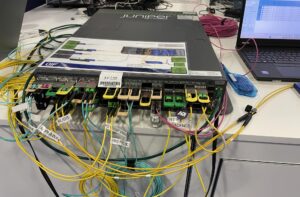
Figure 4. This demonstration of 800G optics included a network switch populated with pluggable modules from several companies.
Figure 4 shows a Juniper Networks switch holding 800G pluggable optical modules from several companies. This setup demonstrates linear to Retimed Transmitter, Linear Receiver (RLTR) bidirectional data transmission. Modules in the switch connect to test equipment that includes a Keysight Interconnect and Network Performance Tester and a Multilane BERT. The test signal was a PRBS31 pattern. The setup also demonstrates SerDes and extended long reach (ELR) to near-packaged optics (NPO) interoperability.
To reduce power consumption in pluggable optical modules, the industry has developed linear optical modules, sometimes called low-power modules (LPOs). Traditional pluggable optical modules include a DSP, which increases power consumption and with it, heat that needs cooling. Removing the DSP and placing it in network equipment also reduces the module’s cost. Figure 5 shows an LPO BER demonstration running at 224G (Gb/sec). Figure 6 shows a system diagram.
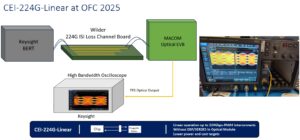
Figure 6. The demonstration diagram shows the test equipment, a Keysight BERT and high-bandwidth oscilloscope. Image: OIF.
The slides shown in this article, plus many others, are available from OIF at https://www.oiforum.com/meetings-events/oif-ofc-2025/.


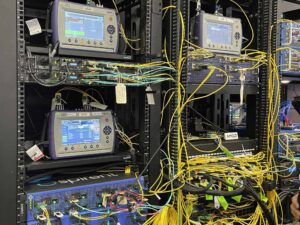
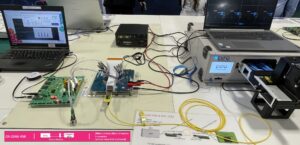
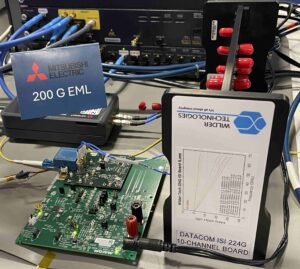

 At Monterey Bay Aquarium, we’re all in on combating climate change
At Monterey Bay Aquarium, we’re all in on combating climate change



